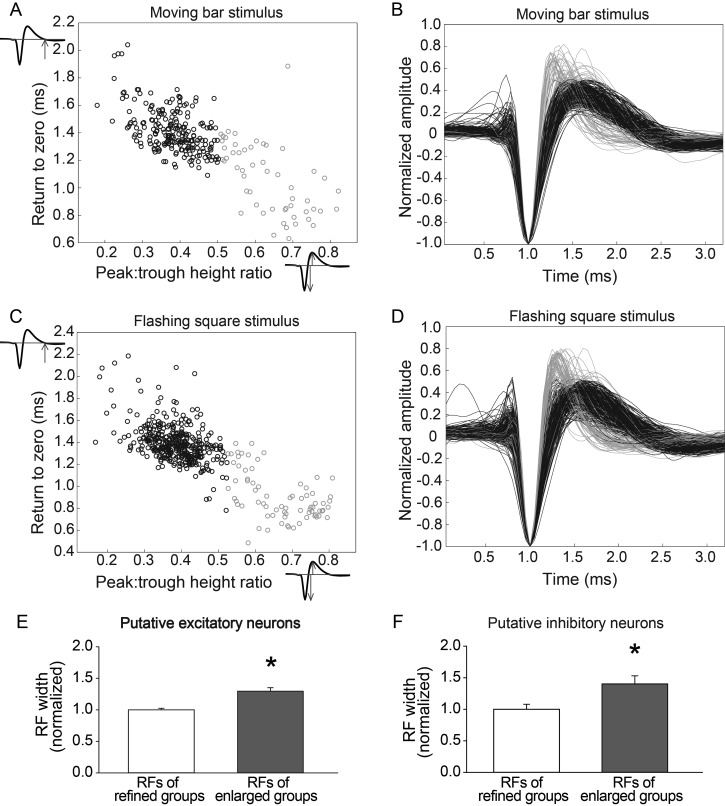Figure 7.
Both putative excitatory and putative inhibitory units have expanded RFs in the absence of sufficient postnatal visual experience. Scatter plots of waveform discrimination parameters for moving bar data (A) and flashing square data (C) demonstrate categorization of broad-spiking (putative excitatory units, black) and narrow-spiking (putative inhibitory units, gray) neurons. Normalized waveforms of all units using moving bar (B) or flashing square (D) stimuli. RFs of both putative excitatory units (E) and putative inhibitory units (F) contribute to enlarged RFs in the P90DR and P37–40 light groups compared with groups with refined RFs (P90 normal, P60DR, and P33–40 light groups, *P < 0.05). Data are presented as mean ± SEM.

